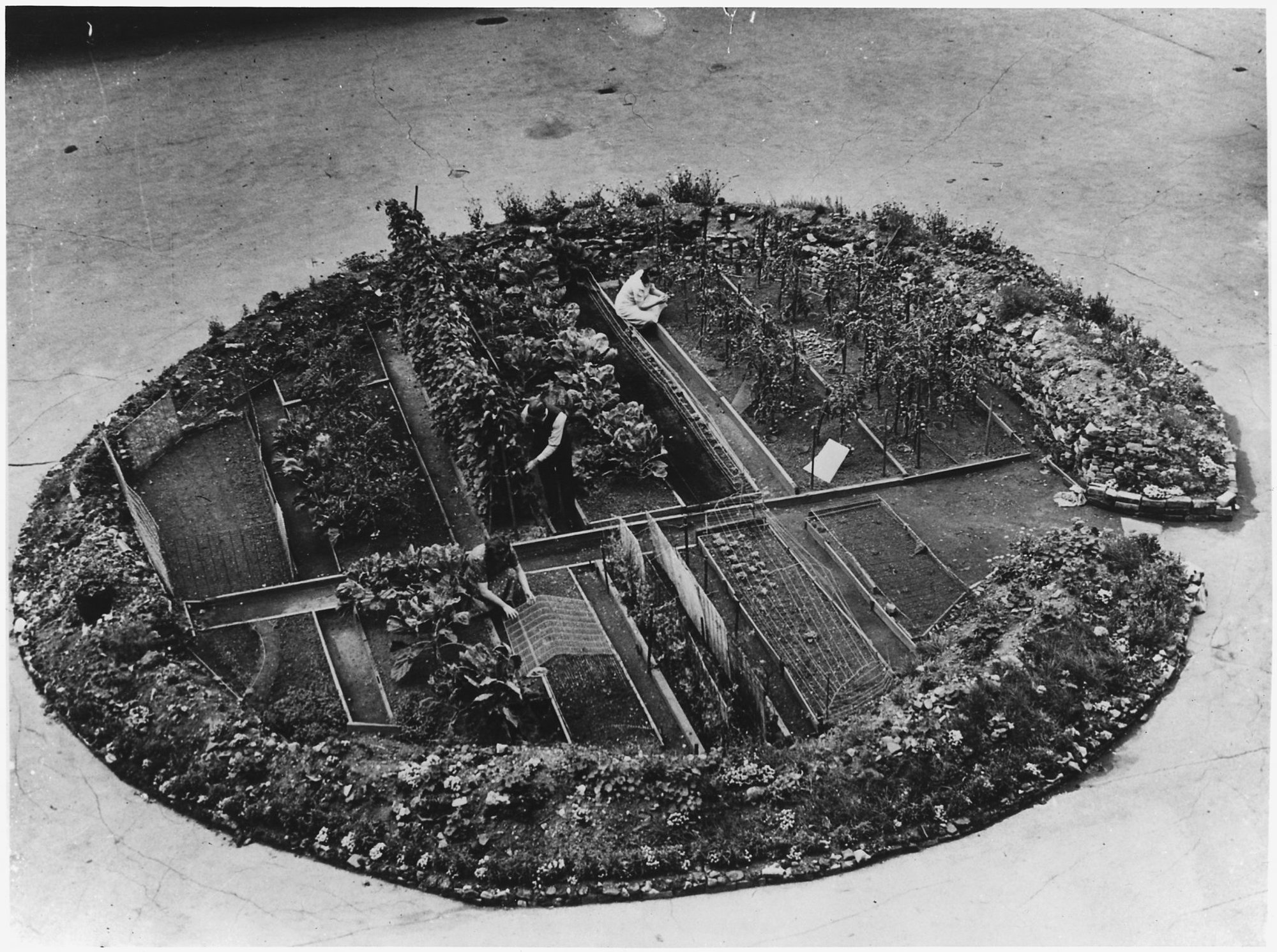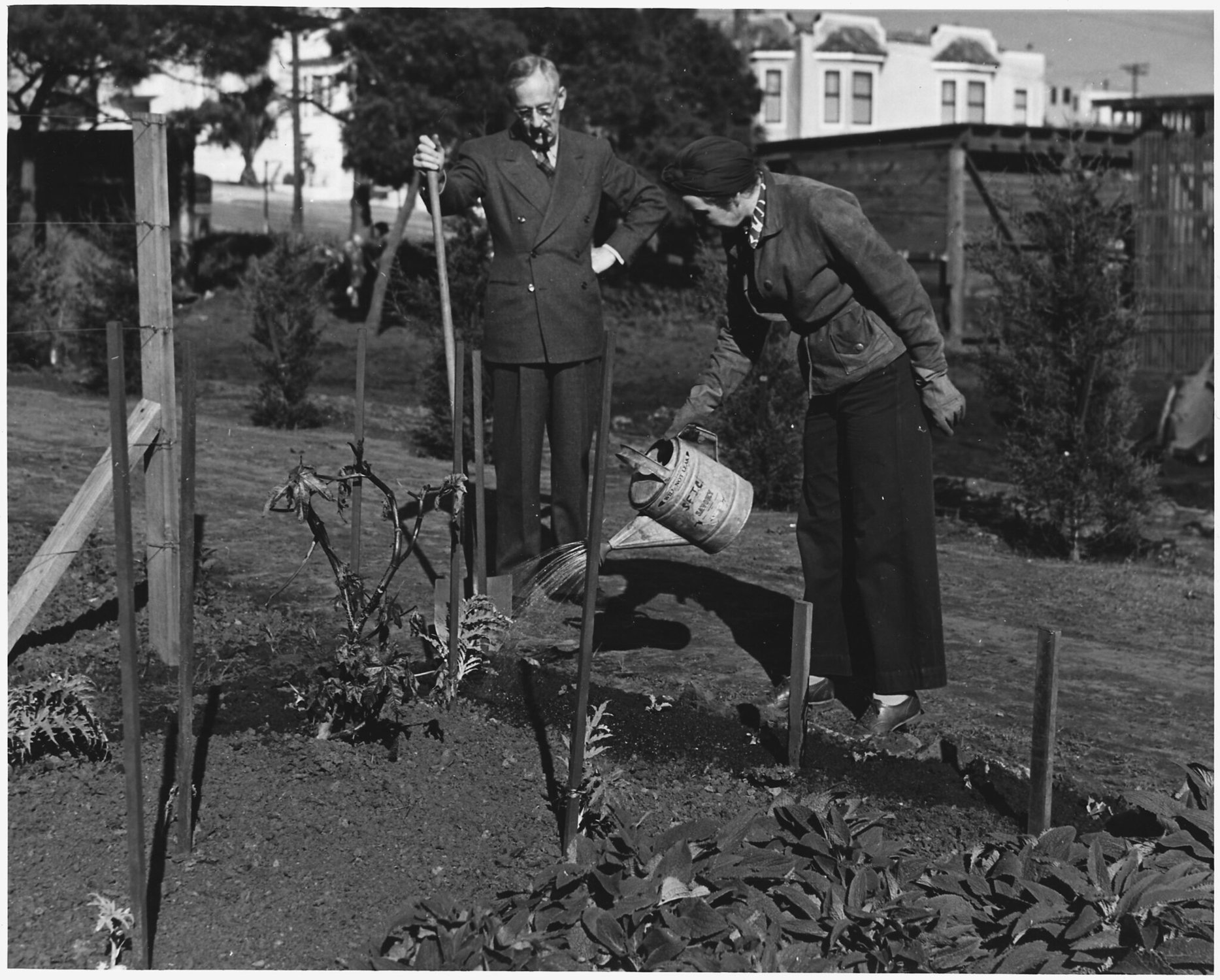Victory Gardens Supplied Americans with Food, Morale Through Two World Wars

A victory garden in a bomb crater in London during WWII. Photo courtesy of Wikimedia Commons.
“The War Garden of 1918 must become the Victory Garden of 1919,” reads a pamphlet filled with cartoon illustrations that was published by the National War Garden Commission. While the men exchanged their farm tools for a rifle, a civilian organization modeled after Great Britain’s Land Lassies formed the Women’s Land Army of America to sustain farms during World War I.
The “Farmerettes,” as they were affectionately called, temporarily left behind their lives in towns and cities to plow fields, drive tractors, and harvest plants and vegetables on rural farms. More than 20,000 women were given a fair wage equal to that of their male counterparts, worked eight-hour shifts, and were issued their own uniforms.
Americans who didn’t go off to fight in war or weren’t working on farmlands were asked by Herbert Hoover, then director of the US Food Administration, to become more self-sufficient to reduce wartime food rationing. Americans families grew fruits, vegetables, herbs, and spices in gardens in their backyards, in city parks, on rooftops, or on playgrounds.

Schoolchildren or “soil soldiers” also took part in gardening by joining the United States School Garden Army. “Every boy and girl who really sees what the home garden may mean, will, I am sure, enter into the purposes with high spirits, because I am sure they would all like to feel that they are in fact fighting in France by joining the home garden army,” wrote President Woodrow Wilson. “[This effort] is just as real and patriotic an effort as the building of ships or the firing of cannon.”
During World War II, the United States initiated a Food Rationing Program that limited canned fruits and vegetables sold at grocery stores. The US Department of Agriculture reestablished Victory Garden programs and encouraged Americans with informational books and pamphlets.
“In community gardens: People living in metropolitan areas seldom have enough suitable ground at home for a garden, but supervised community projects with space allotted to each garden have proven successful,” wrote Victor Rickman Boswell in the Department of Agriculture’s book Victory Garden Leader’s Handbook. “Preferably they should be within walking distance or a short bus or street car ride. In some towns and cities, groups have arranged with a nearby farmer for the use of an acre or so of good land to use as a community garden, paying in either crops or cash. As part of the bargain, the farmer plows and drags the soil.”
Victory Gardens soared in popularity across the United States. There were as many as 20 million Victory Gardens that supplied 40% of all the fruits and vegetables consumed in the nation. The effort unified the homefront in support of the men and women serving overseas.

Matt Fratus is a history staff writer for Coffee or Die. He prides himself on uncovering the most fascinating tales of history by sharing them through any means of engaging storytelling. He writes for his micro-blog @LateNightHistory on Instagram, where he shares the story behind the image. He is also the host of the Late Night History podcast. When not writing about history, Matt enjoys volunteering for One More Wave and rooting for Boston sports teams.
BRCC and Bad Moon Print Press team up for an exclusive, limited-edition T-shirt design!
BRCC partners with Team Room Design for an exclusive T-shirt release!
Thirty Seconds Out has partnered with BRCC for an exclusive shirt design invoking the God of Winter.
Lucas O'Hara of Grizzly Forge has teamed up with BRCC for a badass, exclusive Shirt Club T-shirt design featuring his most popular knife and tiomahawk.
Coffee or Die sits down with one of the graphic designers behind Black Rifle Coffee's signature look and vibe.
Biden will award the Medal of Honor to a Vietnam War Army helicopter pilot who risked his life to save a reconnaissance team from almost certain death.
Ever wonder how much Jack Mandaville would f*ck sh*t up if he went back in time? The American Revolution didn't even see him coming.
A nearly 200-year-old West Point time capsule that at first appeared to yield little more than dust contains hidden treasure, the US Military Academy said.












